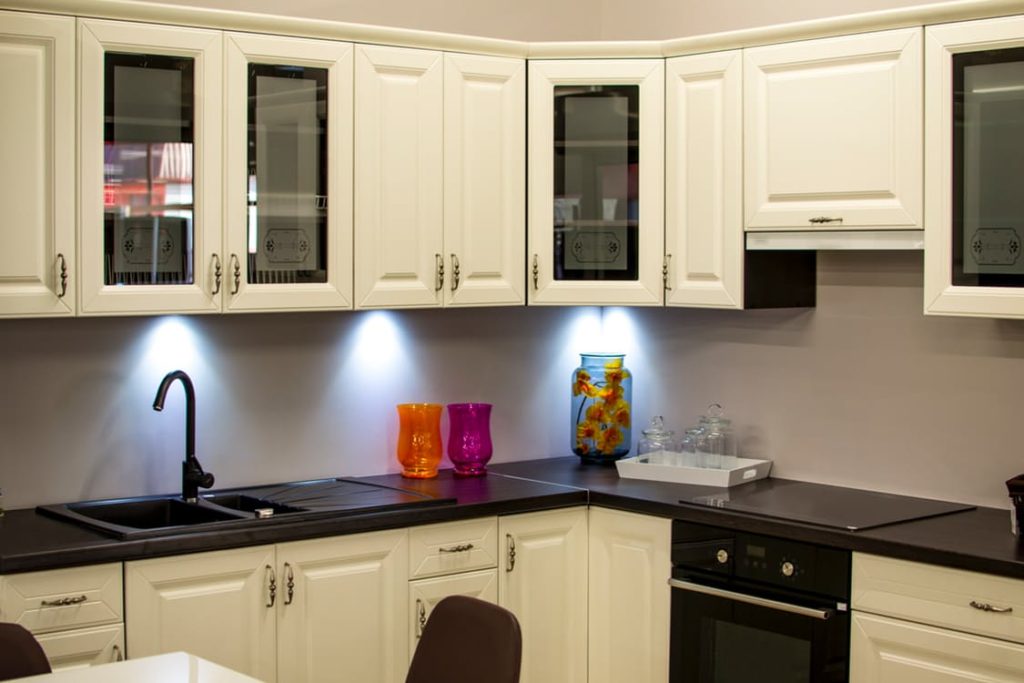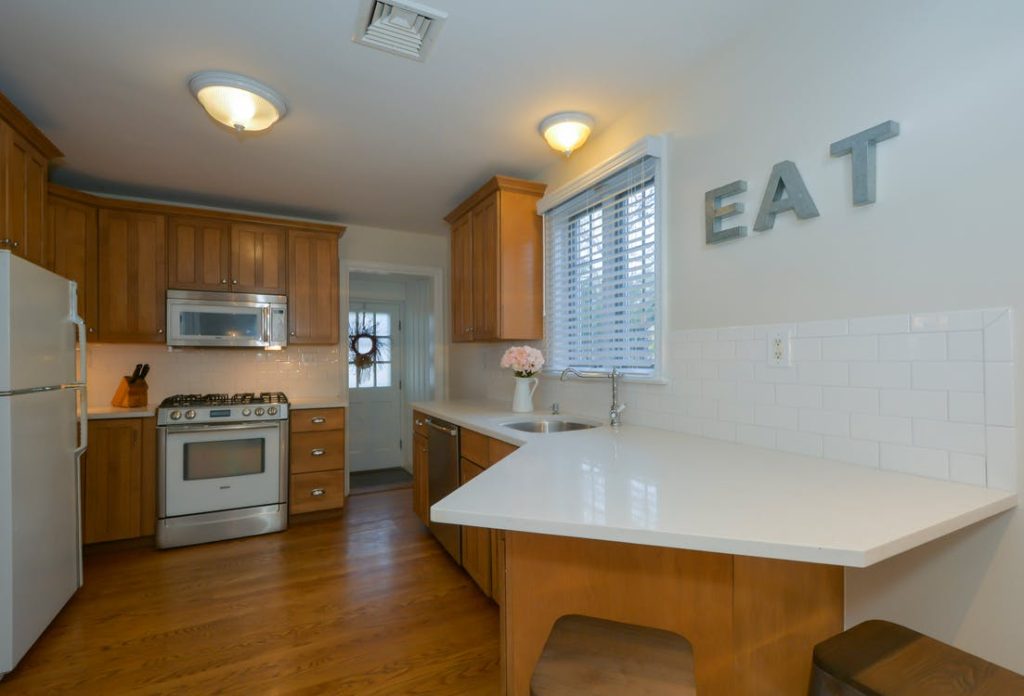If the history of building has been consistent in one thing, it that features once considered a luxury eventually become standard. Once air conditioning was a privilege of the wealthy; today no one would buy a home without it.
Today’s technology is following the same history. Smart homes with intelligent lighting, thermostats, and alarm systems were once science fiction. Now this kind of technology is being built into many new homes, as more and more buyers expect and even demand it. And with the technology more advanced and more affordable than ever, they should expect this convenience for their money.
Smart Products
Billions of dollars are being spent to upgrade older and even new homes with smart products to retro-fit home automation systems. Homes become Wi-Fi networks with wireless audio, motion-activated lighting, surveillance cameras, and HVAC systems, and even internet-connected dishwashers and refrigerators. All of these devices can be controlled through ubiquitous smartphones, so it makes perfect sense to want them in our homes.
Home security companies and even cable communications providers have gotten onboard to offer automated solutions for security and smart entertainment systems. Google and Amazon have both invested heavily in producing their own home automation products. The smart home lifestyle is now being lauded on the internet and national TV commercials, so the interest is only going to grow. U.S. sales of automation systems are expected to surpass $16 billion by 2019.
Slow to Adapt
But these add-on products are not on the same level with a comprehensive, integrated system that can be built into homes. Providers of these smart home solutions have been developing and perfecting their product for years now. The question is why so few builders have partnered with them to provide automation in new construction.
The reason seems to be that so many builders are still following the traditional mindset; they are resistant to change or dismissive of the profit and market potentials. They may feel they lack the expertise or logistics to get the technology integrated in homes without hampering long-established and well-organized building techniques.
But while the delivery of product and expertise to install it can be fulfilled by the smart home technology providers, a resistance to change is only going to hurt construction in the long run – that’s within the next decade, if not now.
Smart Business
Builders are wrong not to take advantage. As demand for integration of home automation rises, so does the price tag of homes with this feature. The opportunity for profit is growing. While the devices used are high-tech, actual installation is well within the skillset of a good electrician, even if a little training may be required, and easily becomes a part of the phase of running wires and installing fixtures.
Most new homes already incorporate elements of the last generation of technology, such as LED lighting, home security systems, and programmable thermostats. More comprehensive, integrated, networked smart homes will be the norm for the next generation. Builders who still doubt the practicality of including high-tech design in home construction are missing out on a lucrative market. It’s only a matter of finding a supplier with the right order fulfillment system and accepting a mutually beneficial arrangement. More technology means more business, not less.
The history of home construction tells us that while retro is often in, the latest conveniences always become mandatory. Once plumbing, electricity, and open floor plans were new. Home automation is the next step. It’s what people are asking for, and businesses are only hurting themselves by ignoring the demand.
When you realize that ignoring technology – and clients – is never the right move, it’s time to explore the world of home automation, and all that it has to offer. A well-built home that also has the latest technical innovations is going to sell faster and make customers happier. That’s always great for business.
If the history of building has been consistent in one thing, it that features once considered a luxury eventually become standard. Once air conditioning was a privilege of the wealthy; today no one would buy a home without it.
Today’s technology is following the same history. Smart homes with intelligent lighting, thermostats, and alarm systems were once science fiction. Now this kind of technology is being built into many new homes, as more and more buyers expect and even demand it. And with the technology more advanced and more affordable than ever, they should expect this convenience for their money.
Smart Products
Billions of dollars are being spent to upgrade older and even new homes with smart products to retro-fit home automation systems. Homes become Wi-Fi networks with wireless audio, motion-activated lighting, surveillance cameras, and HVAC systems, and even internet-connected dishwashers and refrigerators. All of these devices can be controlled through ubiquitous smartphones, so it makes perfect sense to want them in our homes.
Home security companies and even cable communications providers have gotten onboard to offer automated solutions for security and smart entertainment systems. Google and Amazon have both invested heavily in producing their own home automation products. The smart home lifestyle is now being lauded on the internet and national TV commercials, so the interest is only going to grow. U.S. sales of automation systems are expected to surpass $16 billion by 2019.
Slow to Adapt
But these add-on products are not on the same level with a comprehensive, integrated system that can be built into homes. Providers of these smart home solutions have been developing and perfecting their product for years now. The question is why so few builders have partnered with them to provide automation in new construction.
The reason seems to be that so many builders are still following the traditional mindset; they are resistant to change or dismissive of the profit and market potentials. They may feel they lack the expertise or logistics to get the technology integrated in homes without hampering long-established and well-organized building techniques.
But while the delivery of product and expertise to install it can be fulfilled by the smart home technology providers, a resistance to change is only going to hurt construction in the long run – that’s within the next decade, if not now.
Smart Business
Builders are wrong not to take advantage. As demand for integration of home automation rises, so does the price tag of homes with this feature. The opportunity for profit is growing. While the devices used are high-tech, actual installation is well within the skill set of a good electrician, even if a little training may be required, and easily becomes a part of the phase of running wires and installing fixtures.
Most new homes already incorporate elements of the last generation of technology, such as LED lighting, home security systems, and programmable thermostats. More comprehensive, integrated, networked smart homes will be the norm for the next generation. Builders who still doubt the practicality of including high-tech design in home construction are missing out on a lucrative market. It’s only a matter of finding a supplier with the right order fulfillment system and accepting a mutually beneficial arrangement. More technology means more business, not less.
The history of home construction tells us that while retro is often in, the latest conveniences always become mandatory. Once plumbing, electricity, and open floor plans were new. Home automation is the next step. It’s what people are asking for, and businesses are only hurting themselves by ignoring the demand.
When you realize that ignoring technology – and clients – is never the right move, it’s time to explore the world of home automation, and all that it has to offer. A well-built home that also has the latest technical innovations is going to sell faster and make customers happier. That’s always great for business.





